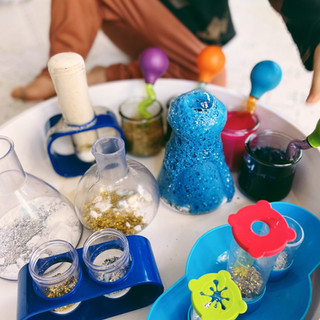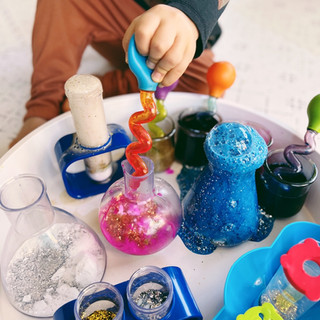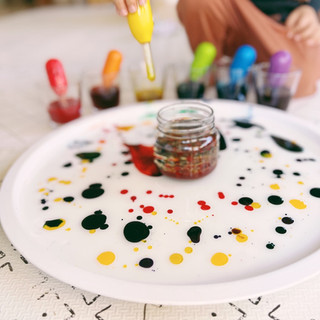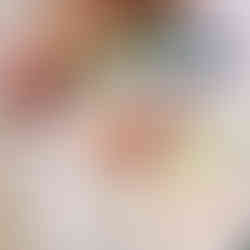Two New Year’s Science Experiments
- Yasmeen Kamrani Sallam
- Dec 30, 2021
- 2 min read
These two science experiments are to recreate the New Years tradition of glitter/confetti and fireworks. Since children are fueled by curiosity, science is always a wonderful way to encourage exploring, discovering, and observing. Science is all about making inquiry based observations and figuring out how things work. Simple, hands-on experiments such as these two experiments are great ways to honor a child's curiosity.

Fizzing Sparkly New Years Potions: This invitation is your traditional baking soda and vinegar science activity with a creative New Year twist. You will need baking soda, dish soap, glitter/confetti, liquid water colors, vinegar, twisty droppers, Learning Resources Spalshology Water Lab and Primary Science Lab Set, and sensory tray.

Place a base of baking soda, dish soap, glitter/confetti into the Learning Resources containers. Place liquid water colors and vinegar into cups and provide droppers. Invite the child to explore and create fizzing sparkly potions. Through this process they learn about color recognition, cause and effect, chemical reactions, and scientific theory all through open-ended inquiry based learning.

Oil and Water Fireworks: Some of the best science ingredients can be found in your kitchen. A simple accessible way to create fire works is with oil and water. You will need water, vegetable oil, jumbo droppers, liquid water colors, water, and white/clear tray or clear cup.

If you are conducting the experiment in a tray pour a thin layer of oil, if you are doing it in a cup pour enough where the child is able to visibly see a good amount. Place liquid water colors and water into cups and provide droppers. Invite the child to drop the colored water into the oil. Through this they will see how oil remains separate from the water because it lacks polarity and floats because it’s less dense. Understanding density helps children get the most from the experiment. You can explain that when you have two objects that are the same size but different weights, the one that weighs more has more matter packed into it. It is denser. A good way to tell if something is more or less dense than water is to put it in water. If it sinks, it’s denser, if it floats, it’s less dense. As they drop the water into the oil it will make beautiful designs similar to fireworks.


























Comentarios